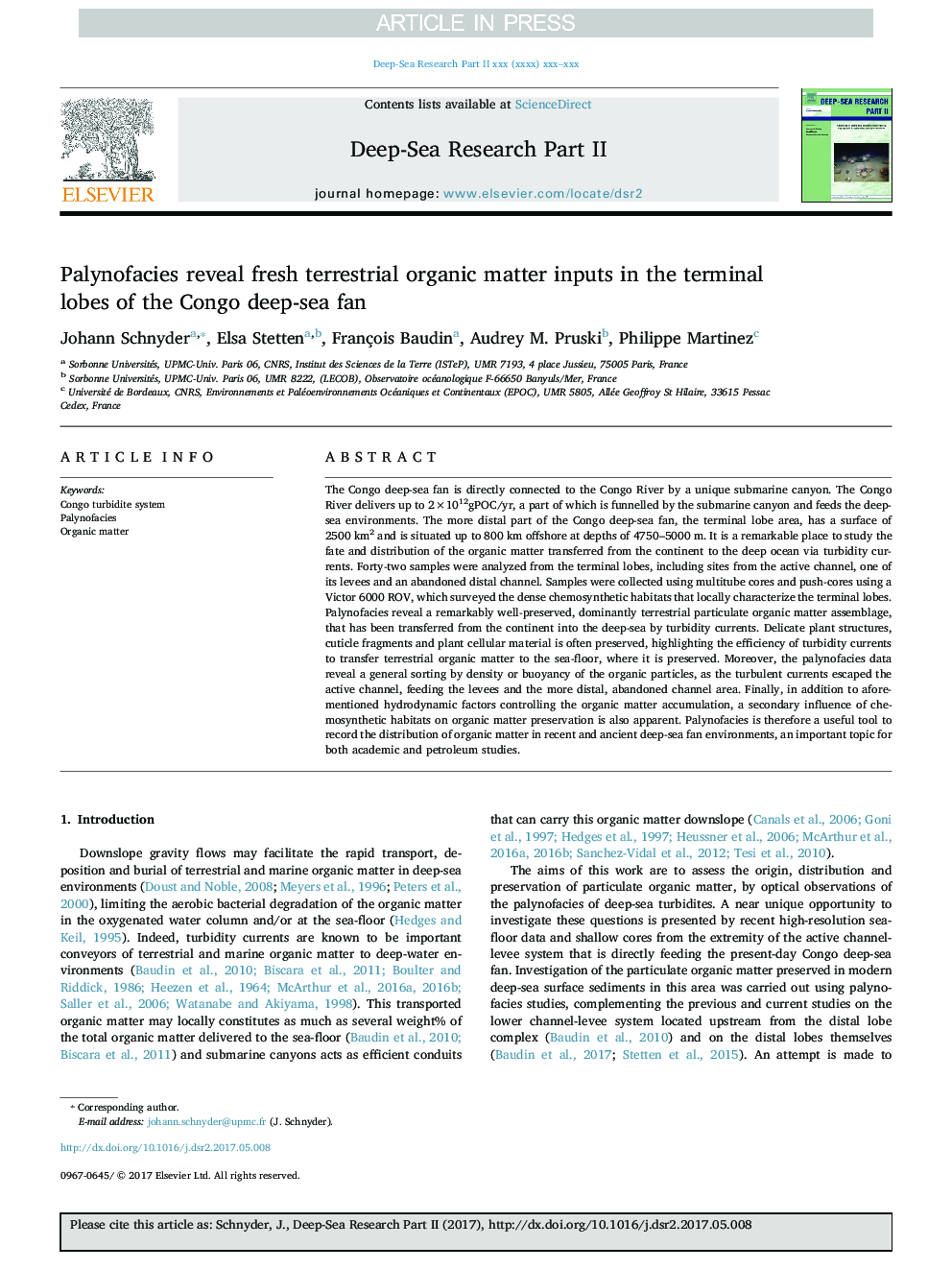| کد مقاله | کد نشریه | سال انتشار | مقاله انگلیسی | نسخه تمام متن |
|---|---|---|---|---|
| 5764802 | 1626400 | 2017 | 18 صفحه PDF | دانلود رایگان |
عنوان انگلیسی مقاله ISI
Palynofacies reveal fresh terrestrial organic matter inputs in the terminal lobes of the Congo deep-sea fan
ترجمه فارسی عنوان
پالینوفیسسی مواد ورودی ماده آلی تازه را در لانه های پایانی طرفدار دریای کنگو نشان می دهد
دانلود مقاله + سفارش ترجمه
دانلود مقاله ISI انگلیسی
رایگان برای ایرانیان
کلمات کلیدی
سیستم توربوجت کنگو، پالینوفاسیس، مواد ارگانیک،
موضوعات مرتبط
مهندسی و علوم پایه
علوم زمین و سیارات
زمین شناسی
چکیده انگلیسی
The Congo deep-sea fan is directly connected to the Congo River by a unique submarine canyon. The Congo River delivers up to 2Ã1012gPOC/yr, a part of which is funnelled by the submarine canyon and feeds the deep-sea environments. The more distal part of the Congo deep-sea fan, the terminal lobe area, has a surface of 2500Â km2 and is situated up to 800Â km offshore at depths of 4750-5000Â m. It is a remarkable place to study the fate and distribution of the organic matter transferred from the continent to the deep ocean via turbidity currents. Forty-two samples were analyzed from the terminal lobes, including sites from the active channel, one of its levees and an abandoned distal channel. Samples were collected using multitube cores and push-cores using a Victor 6000 ROV, which surveyed the dense chemosynthetic habitats that locally characterize the terminal lobes. Palynofacies reveal a remarkably well-preserved, dominantly terrestrial particulate organic matter assemblage, that has been transferred from the continent into the deep-sea by turbidity currents. Delicate plant structures, cuticle fragments and plant cellular material is often preserved, highlighting the efficiency of turbidity currents to transfer terrestrial organic matter to the sea-floor, where it is preserved. Moreover, the palynofacies data reveal a general sorting by density or buoyancy of the organic particles, as the turbulent currents escaped the active channel, feeding the levees and the more distal, abandoned channel area. Finally, in addition to aforementioned hydrodynamic factors controlling the organic matter accumulation, a secondary influence of chemosynthetic habitats on organic matter preservation is also apparent. Palynofacies is therefore a useful tool to record the distribution of organic matter in recent and ancient deep-sea fan environments, an important topic for both academic and petroleum studies.
ناشر
Database: Elsevier - ScienceDirect (ساینس دایرکت)
Journal: Deep Sea Research Part II: Topical Studies in Oceanography - Volume 142, August 2017, Pages 91-108
Journal: Deep Sea Research Part II: Topical Studies in Oceanography - Volume 142, August 2017, Pages 91-108
نویسندگان
Johann Schnyder, Elsa Stetten, François Baudin, Audrey M. Pruski, Philippe Martinez,
